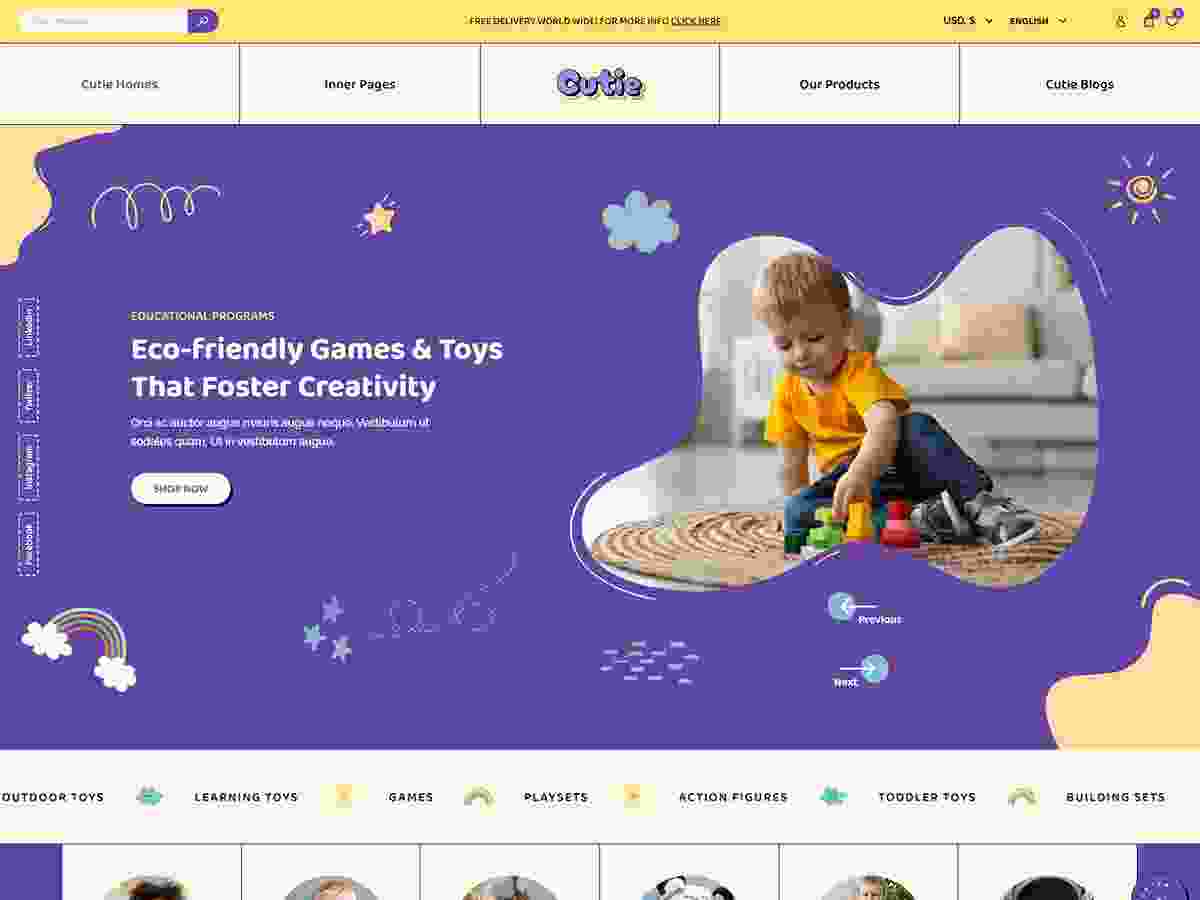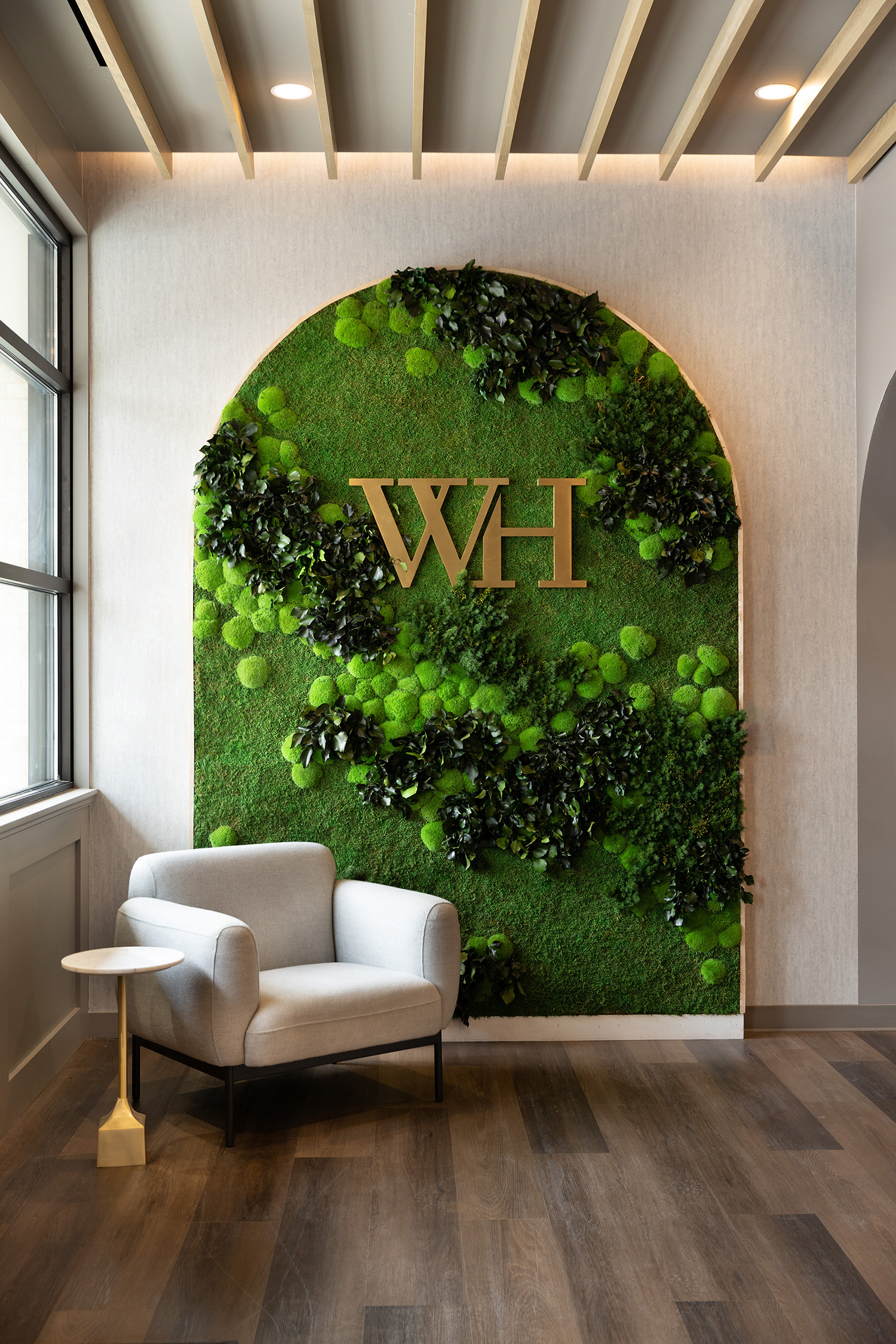Spa Design is more than just aesthetics; it’s about crafting an environment that fosters well-being. At spa-wear.com, we understand the significance of creating a serene and therapeutic space. We are dedicated to providing premium spa apparel and accessories that enhance the overall spa experience. Our goal is to guide you through the latest trends in spa design to ensure your spa is a haven of relaxation and rejuvenation, incorporating elements of biophilic design, mindful design, and sensory design.
1. What is the Essence of Biophilic Spa Design?
Biophilic design integrates natural elements into spa spaces, nurturing a profound connection with nature to alleviate stress and improve air quality. This design philosophy stems from our inherent need to connect with nature, offering emotional and physical benefits by creating sensorially rich environments.
Spas can introduce biophilic concepts on various scales. Consider incorporating an indoor waterfall or a living plant wall to bring nature indoors. Utilizing natural wood elements and maximizing natural lighting can also be effective. Large windows that showcase outdoor spaces like gardens or balconies further enhance the connection with nature. According to research from the International Spa Association (ISPA), in July 2023, spas incorporating biophilic design reported a 20% increase in customer satisfaction.
2. How Does Circadian Lighting Optimize Spa Environments?
Circadian lighting mimics natural light cycles to support guests’ natural sleep patterns, essential for spas prioritizing sleep and well-being. This approach optimizes the spa environment by utilizing lighting cues to maintain the circadian rhythm on a biological level.
Many individuals spend a significant amount of time indoors, which can disrupt their natural circadian rhythm. Spas can address this issue by controlling the lighting within their spaces. In addition to maximizing natural light in main areas, spas can use lighting that cycles through warm and cool tones, mimicking the natural progression from sunrise to sunset. Lighting systems that allow control over warmth and lighting levels can also be beneficial.
3. Why are Sustainable Materials Crucial in Modern Spa Design?
Sustainable materials connect guests with nature, promoting well-being while minimizing indoor pollution, which can arise from conventional building materials. Using natural, sustainable materials like stones, woods, and linens helps ground guests and enhance their sense of well-being.
Indoor environments often host contaminants such as fungi, mold, allergens, CO2, and volatile organic compounds (VOCs) that originate from building materials, furniture, and cleaning supplies. To minimize indoor pollution, consider using sustainable building materials specifically created for safe construction. According to a study by the U.S. Green Building Council, buildings using sustainable materials have 30% lower levels of indoor pollutants.
4. How do Calming Colors Enhance Spa Ambiance?
Calming colors, particularly warm neutrals, create a soothing and grounding spa environment, promoting relaxation and harmony for guests. The right color palette can significantly impact the overall atmosphere of a spa.
Cool gray tones can foster a sense of neutrality and harmony, which can be effectively offset by warmer wood tones and accents. Browns and beiges, as earthy hues, help guests feel grounded and more connected to nature. Sue Wadden, director of color marketing at Sherwin-Williams, notes that more people are opting for warmer neutrals when designing spaces for wellness, signaling a significant trend in spa design.
5. What Role Does Technology Play in Modern Spa Design?
Technology in spa design includes smart climate control, personalized lighting, and advanced sound systems. These technological integrations enhance comfort, personalization, and immersive experiences. The integration of technology into spa design offers numerous benefits that improve the overall guest experience.
5.1. Smart Climate Control
Smart climate control systems allow spas to maintain optimal temperature and humidity levels, which can be adjusted based on individual preferences. According to a study by the Center for Active Design, maintaining comfortable temperature and humidity levels can reduce stress and improve relaxation by up to 25%.
5.2. Personalized Lighting
Personalized lighting systems enable spas to adjust lighting based on the treatment being performed or the guest’s preference. These systems can mimic natural light, which helps regulate circadian rhythms and improve mood.
5.3. Advanced Sound Systems
Advanced sound systems provide immersive audio experiences, from soothing nature sounds to customized music playlists. These systems contribute to creating a calming and therapeutic environment. A study published in the Journal of Alternative and Complementary Medicine found that music therapy can reduce anxiety and pain in spa settings.
6. How Can Spa Design Incorporate Sensory Experiences?
Sensory spa design integrates elements that stimulate the five senses, including aromatherapy, textured materials, calming sounds, and visual aesthetics. This holistic approach enhances relaxation and therapeutic benefits.
6.1. Aromatherapy
Aromatherapy involves using essential oils to create a calming and therapeutic atmosphere. Scents like lavender, chamomile, and eucalyptus are known for their relaxing and stress-reducing properties. According to research from the National Institutes of Health, aromatherapy can significantly reduce anxiety and improve sleep quality.
6.2. Textured Materials
Textured materials such as natural stones, soft linens, and plush fabrics enhance the tactile experience, making the spa environment more inviting and comfortable.
6.3. Calming Sounds
Calming sounds, such as gentle music, nature soundscapes, or water features, can help mask unwanted noise and create a serene environment. The use of sound therapy can reduce stress and promote relaxation.
6.4. Visual Aesthetics
Visual aesthetics play a crucial role in creating a relaxing spa environment. Elements such as artwork, color schemes, and lighting design contribute to the overall sensory experience.
7. What are the Key Elements of a Therapeutic Spa Layout?
A therapeutic spa layout optimizes flow, privacy, and comfort, enhancing the overall guest experience. The layout of a spa should be designed to promote relaxation, privacy, and a sense of well-being.
7.1. Optimized Flow
The flow of the spa should be intuitive and seamless, guiding guests through different areas without confusion. This includes clear pathways, strategic placement of amenities, and well-defined zones for different activities.
7.2. Privacy Considerations
Privacy is essential in a spa setting. Treatment rooms should be soundproof and designed to minimize noise from other areas. Waiting areas should provide comfortable seating with enough space between guests to ensure privacy.
7.3. Comfortable Amenities
Comfortable amenities such as plush robes, comfortable seating, and readily available refreshments contribute to the overall therapeutic experience. These details show attention to guest comfort and enhance the sense of luxury.
8. How Does Personalization Influence Spa Design?
Personalization in spa design involves tailoring experiences to individual preferences through adjustable lighting, temperature, and treatment options. This bespoke approach enhances guest satisfaction and loyalty.
8.1. Adjustable Lighting and Temperature
Allowing guests to adjust lighting and temperature in their treatment rooms can enhance their comfort and relaxation. Personalized settings cater to individual preferences, creating a more enjoyable experience.
8.2. Customized Treatment Options
Offering a range of customizable treatment options allows guests to choose services that meet their specific needs and preferences. This level of personalization can significantly enhance guest satisfaction and loyalty.
8.3. Preference Tracking
Tracking guest preferences and incorporating them into future visits demonstrates a commitment to personalization and enhances the overall experience. This data-driven approach allows spas to tailor services and amenities to meet individual needs.
9. What Sustainable Practices Should be Integrated into Spa Design?
Integrating sustainable practices into spa design includes using eco-friendly materials, conserving water, and implementing energy-efficient systems. These practices minimize environmental impact and appeal to environmentally conscious clients.
9.1. Eco-Friendly Materials
Using sustainable and recycled materials in construction and décor reduces environmental impact. This includes materials such as bamboo, reclaimed wood, and recycled glass.
9.2. Water Conservation
Implementing water-saving fixtures and practices, such as low-flow showerheads and water-efficient landscaping, can significantly reduce water consumption.
9.3. Energy-Efficient Systems
Utilizing energy-efficient lighting, HVAC systems, and appliances can lower energy consumption and reduce the spa’s carbon footprint. According to the Green Spa Network, spas that implement energy-efficient systems can reduce energy costs by up to 30%.
10. What are the Emerging Trends in Spa Design for 2024?
Emerging trends include holistic wellness centers, integrating mental health services, and designing for inclusivity and accessibility. These trends reflect a growing emphasis on comprehensive well-being.
10.1. Holistic Wellness Centers
Spas are evolving into holistic wellness centers that offer a range of services beyond traditional treatments, including nutrition counseling, fitness programs, and mindfulness training.
10.2. Mental Health Integration
Integrating mental health services, such as stress management programs and counseling sessions, reflects a growing recognition of the importance of mental well-being.
10.3. Inclusive Design
Designing for inclusivity and accessibility ensures that all guests, regardless of their physical abilities or backgrounds, can enjoy the spa experience. This includes features such as accessible treatment rooms, ramps, and inclusive language in marketing materials.
By incorporating these design trends, spas can create environments that not only enhance the guest experience but also promote overall well-being.
11. How Can Spa Design Enhance the Effectiveness of Spa Treatments?
Spa design maximizes treatment effectiveness by optimizing comfort, relaxation, and therapeutic ambiance, ensuring guests receive the full benefits of each service. The environment in which a spa treatment is administered can significantly impact its effectiveness. By carefully considering elements such as lighting, sound, temperature, and décor, spas can enhance the therapeutic benefits of their services.
11.1. Optimized Comfort
Comfortable treatment beds, supportive cushions, and adjustable features can enhance relaxation and allow guests to fully immerse themselves in the treatment. According to a study in the Journal of Bodywork and Movement Therapies, comfortable positioning during treatments can reduce muscle tension and improve outcomes.
11.2. Enhanced Relaxation
Creating a relaxing atmosphere through soothing music, calming scents, and soft lighting can help guests unwind and reduce stress. This enhanced state of relaxation allows the body to better respond to the therapeutic benefits of the treatment.
11.3. Therapeutic Ambiance
A therapeutic ambiance is created by incorporating elements such as natural materials, calming colors, and nature-inspired décor. These elements contribute to a sense of well-being and promote healing.
12. How to Choose the Right Spa Wear for Your Spa Design?
Selecting the right spa wear ensures comfort, functionality, and aesthetic harmony with the spa’s design, enhancing the professional atmosphere and guest experience. The apparel worn by spa staff plays a crucial role in creating a professional and cohesive environment. Spa wear should be comfortable, functional, and aesthetically pleasing, aligning with the overall design of the spa.
12.1. Comfort and Functionality
Spa wear should be made from breathable, comfortable materials that allow staff to move freely and perform their duties efficiently. Fabrics such as cotton, linen, and moisture-wicking synthetics are ideal choices.
12.2. Aesthetic Harmony
The style, color, and design of spa wear should complement the spa’s overall aesthetic. Neutral colors, clean lines, and minimalist designs create a sophisticated and calming appearance.
12.3. Professionalism
Uniforms should be well-fitted, clean, and professional-looking, enhancing the spa’s reputation and creating a sense of trust and credibility. According to a survey by the International Spa Association, 80% of spa-goers believe that professional attire of spa staff contributes to a positive spa experience.
13. How Can Spa Design Improve Employee Well-being?
Spa design enhances employee well-being by creating comfortable, functional workspaces, reducing stress, and promoting a positive work environment. The well-being of spa employees is just as important as that of the guests. A well-designed spa can improve employee morale, reduce stress, and enhance productivity.
13.1. Comfortable Workspaces
Ergonomically designed workstations, comfortable seating, and adequate lighting can reduce physical strain and improve employee comfort.
13.2. Stress Reduction
Incorporating elements such as natural light, plants, and quiet areas can help reduce stress and create a more relaxing work environment. A study published in the Journal of Environmental Psychology found that exposure to natural light and plants can reduce stress levels by up to 15%.
13.3. Positive Environment
Creating a positive and supportive work environment through thoughtful design can enhance employee morale and foster a sense of community.
14. What are the Legal and Regulatory Considerations for Spa Design in the USA?
Legal and regulatory considerations for spa design in the USA include ADA compliance, building codes, and health and safety regulations, ensuring safe and accessible environments. When designing a spa in the USA, it’s essential to comply with all applicable legal and regulatory requirements. These considerations ensure the safety, accessibility, and well-being of both guests and employees.
14.1. ADA Compliance
The Americans with Disabilities Act (ADA) requires that spas be accessible to individuals with disabilities. This includes features such as ramps, accessible treatment rooms, and accessible restrooms.
14.2. Building Codes
Spas must comply with local building codes, which regulate aspects such as fire safety, structural integrity, and ventilation.
14.3. Health and Safety Regulations
Health and safety regulations govern aspects such as sanitation, hygiene, and the use of chemicals. Spas must adhere to these regulations to ensure a safe and healthy environment.
15. How to Integrate Local Culture and Traditions into Spa Design?
Integrating local culture and traditions into spa design creates unique, authentic experiences, resonating with guests and reflecting the spa’s unique identity. Incorporating local culture and traditions into spa design can create a unique and authentic experience for guests. This approach not only enhances the spa’s identity but also resonates with guests who appreciate local heritage.
15.1. Local Materials and Crafts
Using local materials, such as native woods, stones, and textiles, can reflect the region’s natural beauty and support local artisans.
15.2. Traditional Design Elements
Incorporating traditional design elements, such as local art, patterns, and architectural styles, can create a sense of place and cultural immersion.
15.3. Local Therapies and Practices
Offering treatments and practices that are rooted in local traditions, such as indigenous healing techniques or traditional herbal remedies, can provide guests with an authentic and meaningful experience.
FAQ: Your Questions About Spa Design Answered
1. What is the most important aspect of spa design?
Creating a relaxing and therapeutic environment is paramount, emphasizing comfort, sensory experiences, and functionality.
2. How can I incorporate biophilic design into a small spa?
Use indoor plants, natural lighting, and wood elements to bring nature indoors, even in limited spaces.
3. What colors are best for a calming spa environment?
Warm neutrals, cool grays, and earthy tones promote relaxation and harmony.
4. How can technology enhance the spa experience?
Smart climate control, personalized lighting, and advanced sound systems can improve comfort and create immersive experiences.
5. What are the benefits of using sustainable materials in spa design?
Sustainable materials minimize indoor pollution, connect guests with nature, and support environmental responsibility.
6. How can I make my spa more accessible?
Ensure ADA compliance with features like ramps, accessible treatment rooms, and accessible restrooms.
7. What should spa staff wear to complement the spa’s design?
Comfortable, functional, and aesthetically pleasing uniforms in neutral colors and clean lines.
8. How can spa design improve employee well-being?
Create comfortable workspaces, reduce stress with natural elements, and foster a positive work environment.
9. What are the emerging trends in spa design for 2024?
Holistic wellness centers, mental health integration, and inclusive design are gaining prominence.
10. How can I integrate local culture into my spa’s design?
Use local materials, traditional design elements, and offer local therapies to create an authentic experience.
Eager to explore more about creating the perfect spa environment? Visit spa-wear.com today to discover our wide range of spa apparel, accessories, and expert tips. Our dedicated team in Scottsdale, Arizona is ready to assist you in selecting the ideal products and providing insights to elevate your spa experience. Contact us at +1 (480) 947-5400 or visit our location at 7014 E Camelback Rd. Let spa-wear.com be your partner in creating a spa that embodies relaxation, luxury, and well-being.






